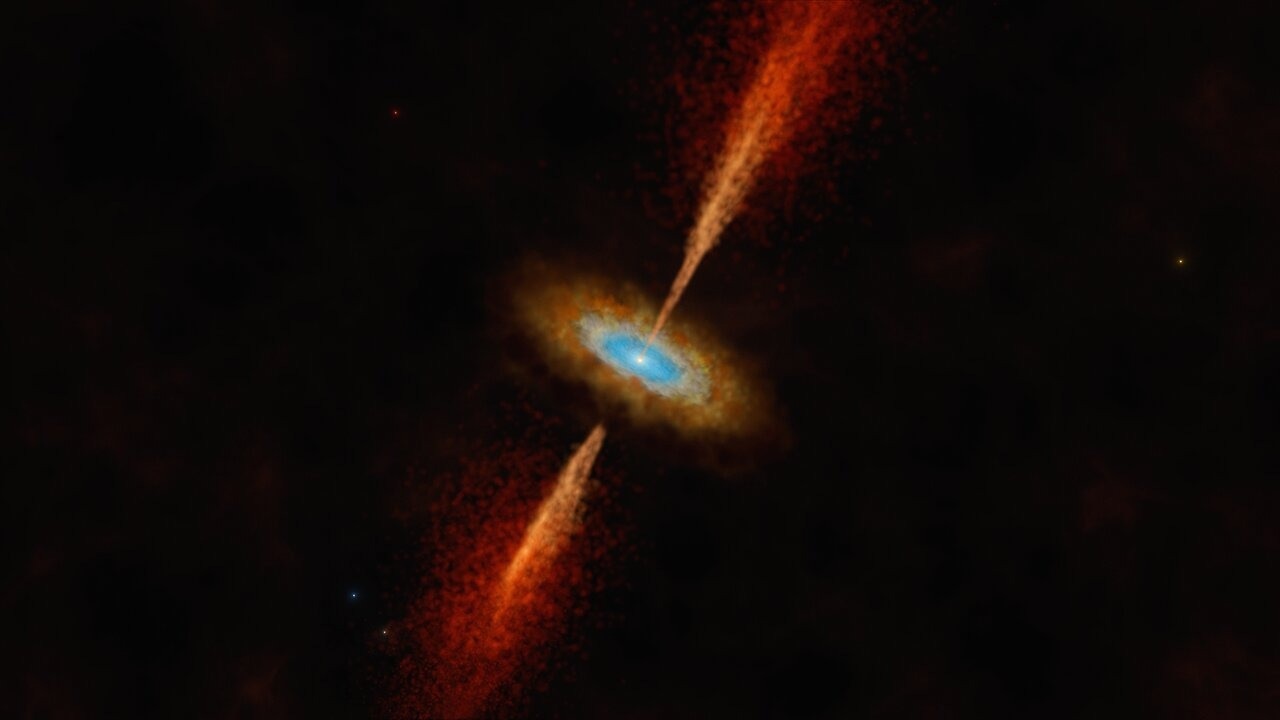Astronomers have made a stunning discovery: in the nearby galaxy known as the Large Magellanic Cloud, they have discovered a disk centered on a young star. This is the first time a disk like that has ever been discovered outside of the galaxy; it is exactly like the ones that generate planets in the Milky Way.
 Artist’s impression of the disc and jet in the young star system HH 1177. Image Credit: European Southern Observatory
Artist’s impression of the disc and jet in the young star system HH 1177. Image Credit: European Southern Observatory
According to the latest measurements, a massive young star is building a rotating disc by expanding and absorbing stuff from its surroundings. The European Southern Observatory (ESO) is a partner in the Atacama Large Millimeter/submillimeter Array (ALMA) in Chile, which was used for the detection.
When I first saw evidence for a rotating structure in the ALMA data, I could not believe that we had detected the first extragalactic accretion disc, it was a special moment. We know discs are vital to forming stars and planets in our galaxy, and here, for the first time, we’re seeing direct evidence for this in another galaxy.
Anna McLeod, Study Lead Author and Associate Professor, Durham University
This study is a follow-up to observations made with the Multi Unit Spectroscopic Explorer (MUSE) instrument on ESO’s Very Large Telescope (VLT), which was able to identify a jet from a developing star deep within a gas cloud in the Large Magellanic Cloud. The system was named HH 1177.
McLeod added, “We discovered a jet being launched from this young massive star, and its presence is a signpost for ongoing disc accretion.”
However, to verify the existence of such a disk, the group had to gauge the motion of the thick gas surrounding the star.
Matter flattens into a revolving disc around an emerging star as it is drawn towards it; it is unable to fall straight on the star. The disc rotates more quickly as it approaches the center, and this speed differential is the primary indicator for astronomers that an accretion disc is there.
The frequency of light changes depending on how fast the gas emitting the light is moving towards or away from us. This is precisely the same phenomenon that occurs when the pitch of an ambulance siren changes as it passes you and the frequency of the sound goes from higher to lower.
Jonathan Henshaw, Study Co-Author and Research Fellow, Liverpool John Moores University
The authors were able to determine the characteristic spin of a disc using ALMA’s exact frequency data, confirming the discovery of the first disc around an extragalactic young star.
Massive stars, such as the one seen above, form significantly faster and live far shorter lifetimes than low-mass stars like the Sun. These massive stars are notoriously difficult to spot in the Milky Way and are frequently veiled from view by the dusty material from which they generate as a disc form around them.
The material from which new stars are created in the Large Magellanic Cloud, a galaxy 160,000 light-years away, is fundamentally different from that in the Milky Way. HH 1177 is no longer encased in its natal cocoon, providing astronomers with an unimpeded, albeit distant, view of star and planet formation.
McLeod concluded, “We are in an era of rapid technological advancement when it comes to astronomical facilities. Being able to study how stars form at such incredible distances and in a different galaxy is very exciting.”
Journal Reference:
McLeod, A. F., et. al. (2023) A probable Keplerian disk feeding an optically revealed massive young star. Nature. doi:10.1038/s41586-023-06790-2